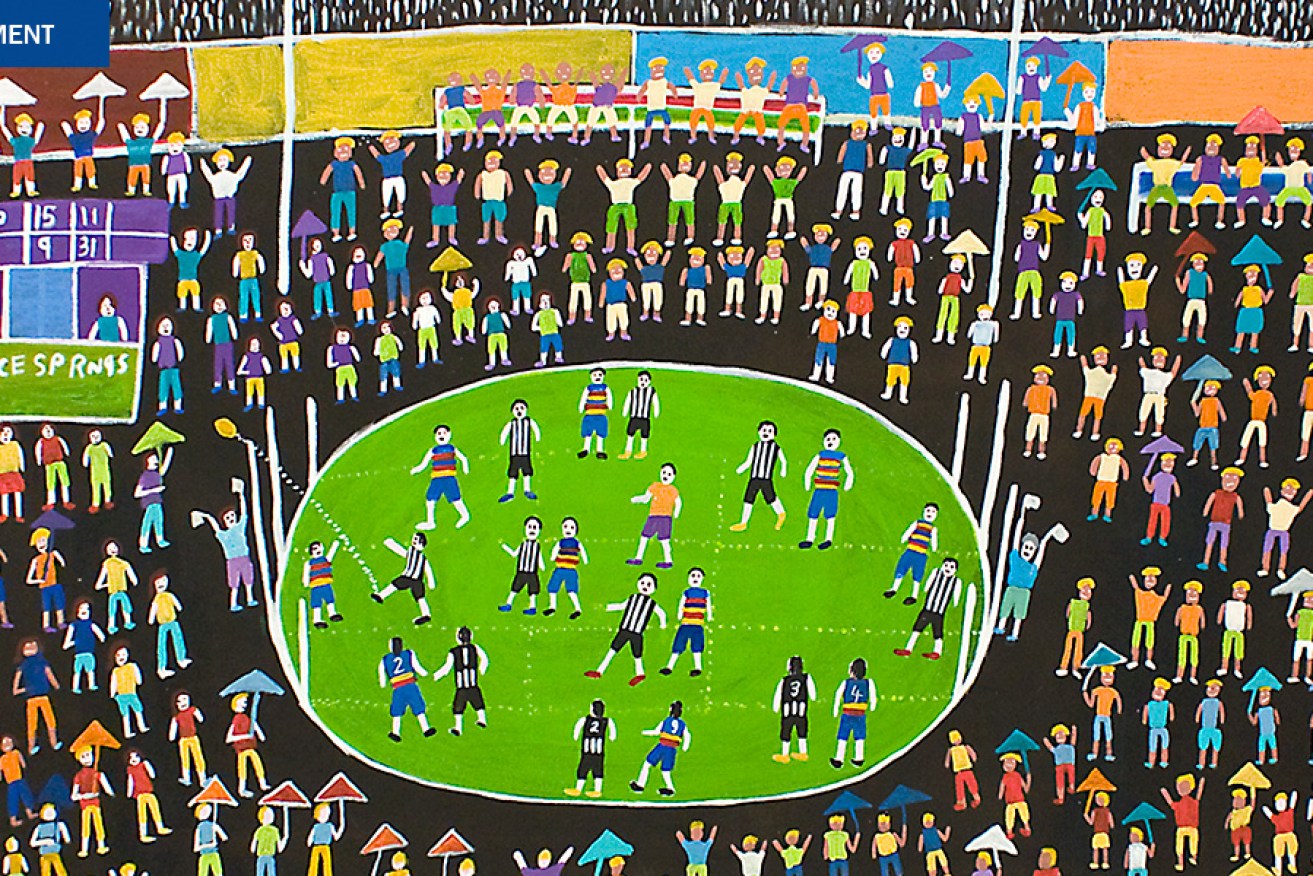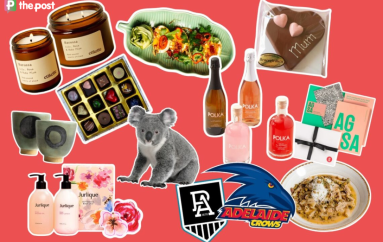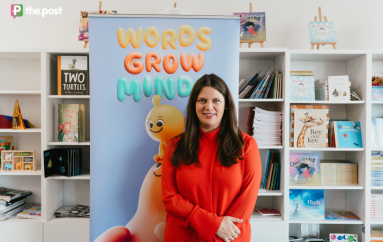Tarnanthi Festival

Josie Kunoth Petyarre - Anmatyerre people, Northern Territory | Football Alice Springs, 2014 | Synthetic polymer paint on linen. Image courtesy of the artist and Mossenson Galleries
Adelaide comes alive with Aboriginal and Torres Strait Islander art this October through the inaugural Tarnanthi Festival.
Tarnanthi, pronounced tar-nan-dee, is a Kaurna word from the traditional owners of the Adelaide Plains. It means to come forth or appear – like the sun and the first emergence of light, or a seed sprouting. For many cultures, first light signifies new beginnings.
Tarnanthi, the inaugural Festival of Contemporary Aboriginal and Torres Strait Islander Art, casts new light on the art of Australia’s rich and diverse Indigenous cultures. The Festival’s artistic vision encourages new beginnings by providing artists with opportunities to create significant new work.
The festival includes a series of exhibitions, presented in partnership with 22 key cultural institutions across South Australia, which showcase the extraordinary, the significant and the unique, and challenge existing notions of Aboriginal art. At its heart, the Art Gallery of South Australia is showcasing its most ambitious exhibition of Aboriginal and Torres Strait Islander art in its 134-year history.
Kicking off on the front steps of the Art Gallery, Tarnanthi commences on Thursday, October 8, with a ceremonial welcome for artists and visitors. The Gallery will be open 6-9pm for the free, public opening.
Within the Gallery, the Tarnanthi exhibition delivers a comprehensive geography of ideas, from far northern tropical Australia to the heart of the Anangu Pitjantjatjara Yankunytjatjara Lands and inner-city studios.
A cloud of glass lit from within will introduce audiences to Tarnanthi at the Art Gallery. In her most ambitious installation to date, Yhonnie Scarce suspends more than 2000 individually blown-glass bush yams in the shape of a nuclear bomb blast conducted at Maralinga in the north of South Australia between 1953 and 1963.
Art and AFL meld in Dinni Kunoth Kemarre and Josie Kunoth Petyarre’s Bush Footy. Based on individual AFL players, Kemarre’s painted wooden sculptures and Petyarre’s paintings of football ‘bush-style’, celebrate the role of Australian Football in Central Australian communities.
Bush Footy also takes over The Studio, where children can sculpt their own favourite footy player figures from plasticine.
The Desert Salon presents inventive approaches to subject matter while holding dear the beloved tradition of acrylic painting on canvas. And contemporary Aboriginal art will be celebrated on a scale never seen in South Australia, including newly-commissioned, large-scale work by Reko Rennie, sculptural works by Yarrenyty Arltere, Brian Robinson’s Custodian of the Blooms and a new moving image work by Warwick Thornton.
The Namatjira Collection speaks to fashion and art, presenting skirts and corresponding watercolours painted in the tradition of Albert Namatjira by his descendants.
Sitting as a highlight exhibition within Tarnanthi at the Art Gallery, Riverland: Yvonne Koolmatrie presents more than 70 works created in this significant Ngarrindjeri artist’s 30-year career. Suspended eel traps launch visitors on an immersive journey featuring works of art that share the story of Koolmatrie’s life lived along the Murray River. This is the first comprehensive survey of Yvonne Koolmatrie’s work.
Collaboration is a guiding principle behind Tarnanthi and one at the heart of this inaugural city-wide festival. By inviting emerging and established artists to present new work, the festival celebrates the artist’s role in shaping our world. Adelaide’s cultural institutions have worked closely together to present the work of more than 300 artists, showcasing hundreds of artists to local and national audiences.
On opening weekend, join more than 40 art centres from across Australia at the Tarnanthi Art Fair at Tandanya National Aboriginal Cultural Institute on Grenfell Street, Adelaide. Festival-goers will have an opportunity to buy works of art priced between $50 and more than $10,000 directly from artists and art centres. This is Adelaide’s first national Aboriginal and Torres Strait Islander Art Fair. The Art Fair will be held Friday, October 9, from 5-9pm and Saturday, October 10, 10am-6pm.
Tarnanthi Festival will see the return of the Kulata Tjuta Project (many spears), commissioned for the 2014 Adelaide Biennial Dark Heart. In the Santos Museum of Economic Botany in Adelaide’s Botanic Gardens, audiences will experience nganmarra – the container of life, an installation of woven forms from Bula’bula Arts.
In collaboration between the JamFactory, the South Australian Museum and Tarnanthi, Shimmer focusses on the art of adornment, while the Desart Photography Prize, held at Institute Room at the State Library of South Australia, presents the recent work of the next generation of desert artist photographers. Further west along North Terrace, exhibitions include an immersive video installation by Daniel Boyd and Archie Moore‘ perfume portraits’ at the Anne & Gordon Samstag Museum of Art, and He gave us water (KapiUngkupayi) by Minyma Kutjara Arts at the South Australian School of Art Gallery at the University of South Australia.




